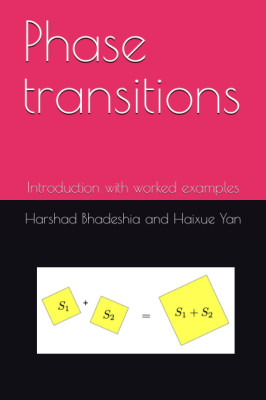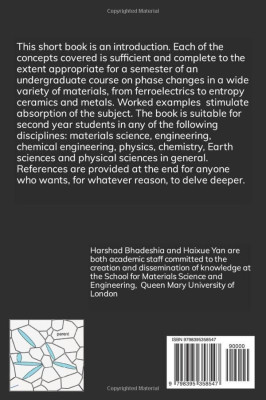News
Course book for EMS523U published, entitled Phase Transitions - introduction and worked examples
21 September 2023


This short book is an introduction. Each of the concepts covered is sufficient and complete to the extent appropriate for a semester of an undergraduate course. There are worked examples that can stimulate absorption of the subject. The book is suitable for second year students in any of the following disciplines: materials science, engineering, chemical engineering, physics, chemistry, Earth sciences and physical sciences in general. References are provided at the end for anyone who wants, for whatever reason, to delve deeper.
People use materials routinely and without worrying about the structure within. It the material functions reliably then there is no justification to think further. There are 9 million scientists in the world today, of whom about 300,000 are concerned with materials - i.e., 0.004% of the world's population. This very special minority drives the creation of new materials by probing and manipulating the structure of materials. Structure itself is as defined over length scales that range from atoms to engineering dimensions so the subject is inherently interdisciplinary like no other.
Countless variables can influence structure and therefore, properties. For this reason, logic is needed to understand, and express quantitatively how such parameters work. One example is that every element in the periodic table can, to a greater or lesser extent, dissolve in every other element. This represents far too much work to explore experimentally. But the mixing and its consequences can in principle be expressed using free energies and atomic mobilities to calculate what should happen. This would then be validated experimentally and used to inspire new materials and processes.
| People: | Harry BHADESHIA |
Updated by: Harry Bhadeshia

